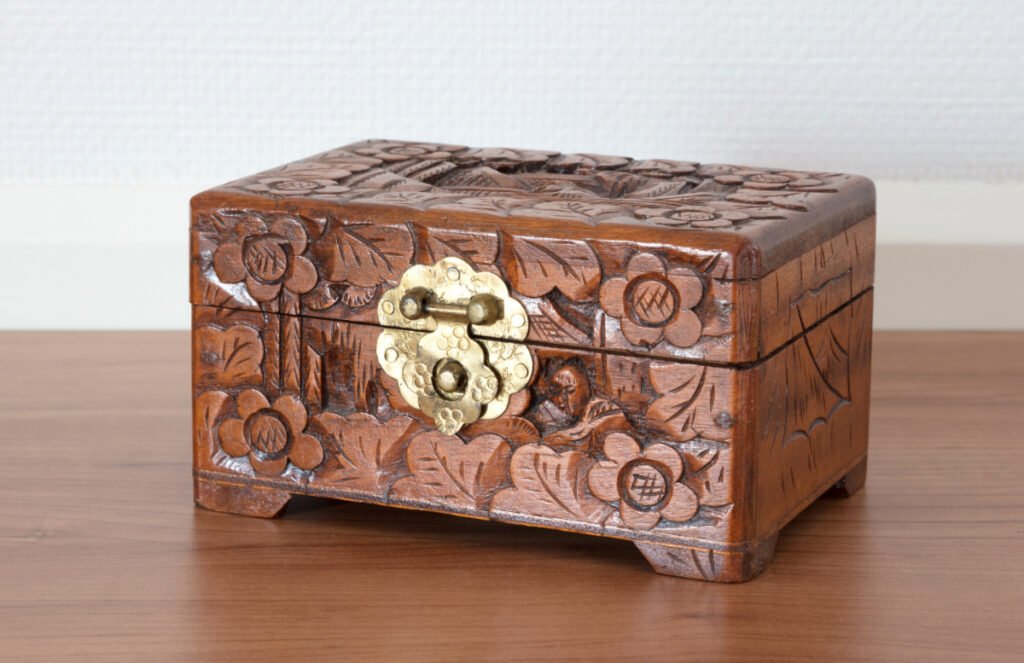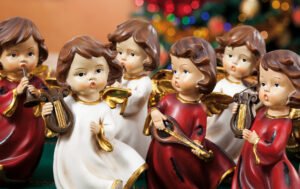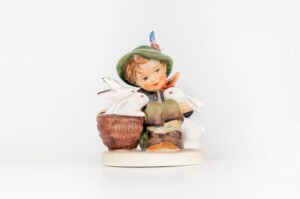Fed up with applying surface oils to keep the bugs and moths away? What if I told you that there’s a chest that repels insects on its own? Well, it’s not magic but a magical, antique Camphor chest!
These large, carved chests have all the futuristic features you can think of – locks, pest-defiant aromas, carvings, and handles. Plus, antique lovers love their aged, handmade joints too! So today, these have a huge demand, valuing up to $1000!
So if you want to buy or sell such an old camphor chest, here’s how to identify and price the REAL ones!
Key Takeaways
- Antique Camphor chests have a lot of carvings, of which the Dragon, Phoenix, Political, Floral, and Maritime ones are rare and expensive.
- You can identify old Camphor chests by their menthol-like scent, dovetail joints, Ivory inlays, and Brass locks.
- Vintage Camphor chests with Lacquer, Painted, or Inlay finishes cost more due to their handmade details and age.
- You’ll get two types of old Camphor chests – Trunk style and Box style. Of these, the trunk-style ones are large, handmade, and precious.
Key Identification Features of Old Camphor Chests

Before we start valuing your old Camphor chest, let’s understand what it really is!
Camphor chests are crude, hand-shaped camphor wood trunks from China, Japan, or Korea, which are loved for their prickly scents, motifs, and natural pest resistance.
But, if you want a truly antique and precious camphor chest, try to spot these features:
- Intricate mythological carvings – Dragons, Phoenixes. Flowers, Birds, Boats, and Trees
- Ornate Brass hardware with Ivory, Wax, and Mother of Pearl inlays
- Outlined wood grain with a semi-gloss Honey Oak lacquer
- Rectangular or trunk-like walls and Dovetail joints
- Natural Insect, Mold, Moth and Mildew resistance
Brief History of Vintage Camphor Chests
How old do you think Camphor chests are? From the 1600s or 1700s? Well, the first Camphor chest dates back to the Middle Ages! Large and carved, these 1500s chests were thick and aromatic. And since they used local Asian wood, these were rare worldwide.
Then, in the 1700s, different Arab traders introduced them to America. They even used some of those to save their clothes from sea bugs. And people called them ‘sailor’s chests’ for the same reason! But these were really heavy!
So, by the 1800s, makers had moved to lighter, plank-style designs. And since they were better insulated, people used them for storing precious items like gold, silver, and silk.
Finally, we had the Industrial Revolution, during which steel became the hero product, even for chests! Besides, it was lightweight and moisture-resistant, too! So, people ditched the thick camphor chests and opted for metal ones!
2 Types of Vintage Camphor Chests With Values
People tweaked the existing designs and sizes with time, giving us these two types of antique camphor chests:
1. Old Trunk-style Camphor Chests

Ever seen the large, 30-35 inch sailor chests in museums? Well, those are nothing but the trunk-style camphor chests costing $300 – 4000. You can spot them by their floral or animal carvings and molded locks. Also, these have dovetail joints and leather linings.
2. Vintage Box-style Camphor Chests

These are small 6-10-inch chests for clothes, jewelry, and medicines. You see, in the 1700s, people couldn’t carry huge trunks on cycles and carriages. So, they made a simple mini-version with interlocking joints and metal lining. These chests usually cost $20 – 2500.
6 Factors to Identify & Appraise Antique Camphor Chests
Now let’s see how other factors like age and style affect your old Camphor chest’s final resale value!
1. Age & Features

We all know that ‘Old is Gold,’ surprisingly, that’s true for antiques too! Like, the earliest, 1700s chests cost more due to their aged finishes. But the new 1930s chests are cheaper, as they are plain! So, tracing your chest’s age and years becomes extremely important!
The following table will help you find the age of your old chest based on its features and assess its worth!
| Antique Camphor Chest Year | Age | Unique & Collectible Features | Rough Cost |
| 1700s | 224 – 323 years | Large, durable chests with animal and floral designs, rope ties, and leather lining | $900 – 8000 |
| 1800s | 124 – 223 years | Elaborate Natural, Mythological or Historical designs with Brass hardware and metal lining | $500 – 5000 |
| 1900s | 94 – 123 years | Small, lightweight chests with geometric or Art Deco motifs, simpler handles, and painted finishes | $120 – 3000 |
| 1930s | 84 – 93 years | Modern & Minimal designs with carved Ivory or Mother-of-Pearl inlays, Steel handles, and hinges | $40 – 1200 |
Try to get old Camphor chests with brushed brass hinges, locks, clasps, and handles for an old make.
2. Chest Styles

You’ll get antique Camphor Wood chests in four styles – Carved, Inlaid, Brass-bound, and Plain. Of these, the carved ones cost more due to their old, colonial designs. But the plain ones cost less since they might have machine-made joints and finishes.
Let’s check the costs:
| Old Camphor Chest Style | Special Features | Average Value |
| Carved Camphor Chests | Thick, hand-carved chests with Historical, Natural, Mythological, or Political designs | $1200 – 8000 |
| Brass-Bound Camphor Chests | Small, Brass-style chests with brushed Brass lining and decorative hardware | $900 – 3500 |
| Inlaid Camphor Chests | Large, trunk-style chests with Ivory, Mother-of-Pearl, or Precious metal inlays | $100 – 4000 |
| Plain Camphor Chests | Geometric or Art-Deco-style chests with polished or painted finishes and linear grain patterns | $40 – 1500 |
Get Camphor chests with Geometric, Floral, or Chinese Rosewood inlays for the best value.
3. Patterns

Not all Camphor chests have Federal or Colonial motifs. Some Sailor’s chests also use regional Landscape and Maritime carvings, while others have Calligraphy. So, let’s see how to appraise such chests!
| Antique Camphor Chest Patterns | Estimated Value |
| Flora & Fauna – Flowers, Trees, Birds & Other Animals | $1200 – 4000 |
| Mythology & Religious Symbols – Dragons, Phoenix, Deities & Scenes | $900 – 2000 |
| Landscapes – Rivers, Forests & Villages | $500 – 2500 |
| Geometric & Abstract Designs | $80 – 1200 |
| Historical Motifs & Calligraphy | $300 – 1500 |
| Maritime Designs | $100 – 2000 |
4. Surface Finishes
Do you know that different Camphor chests have different wall finishes as per age and region? For example, the earliest 1700s chests had lacquers and inlays, while the 1900s used paint. So, each has different features and textures that affect the cost.
Let’s see that in the chart below:
| Old Camphor Chest Finishes | How to Identify Them? | Average Price |
| Natural Finish | Simple, semi-gloss polish with a soft sheen and stroked appearance | $900 – 5000 |
| Lacquer Finish | Glossy & Smooth finishes with clear or yellow-colored coats | $500 – 4000, as per the condition |
| Painted Finish | Clear & Matte finish with hand-painted strokes | $100 – 1200 |
| Brass-bound Finish | Small chests with intricate brass lining, latches, and other decorative hardware | $300 – 2500 |
| Inlaid Finish | Intricate Ivory or Ceramic finishes with extra moldings & meshwork | $800 – 4000 |
Pick antique Camphor chests with Milk, Cement, or Enamel paint surfaces for the best returns.
5. Lock Systems

One more visual tool to check if your Camphor chest is old or not is its locks! The earliest chests in the 1700s had manual brass or padlocks. But by the 1900s, makers also used concealed or combination locks!
Here’s a price table to understand how the value of antique camphor chests changes with their locks:
| Old Camphor Chest Locks | How do They work? | Average Value |
| Padlocks | Work on simple, hinged metal plates, wire loops, and a lever-like lock | $900 – 5000 |
| Built-in & Concealed Locks | Use an integrated locking mechanism with pull-out tumbles and keys | $200 – 1500 |
| Combination Locks | Open with a specific series of numbers or symbols instead of keys | $100 – 900 |
| Hidden & Decorative Locks | These are usually hidden under a sliding panel or plate. Work on simple lever locks and keys | $500 – 3000 |
6. Hinges

It’s not just the locks! Even other hardware – hinges and straps affect the final resale value! So, just open the lid and check your hinge’s shape. If rectangular or decorated, it might be an old 1800s hinge. But if it looks gray and shiny, it might be a cheaper 1900s hinge.
Here’s a list of all old Camphor chest hinges, with features and costs:
| Antique Camphor Chest Hinges | Estimated Value |
| Butt Hinges (Foldable & Rectangular) | $900 – 5000 |
| Strap Hinges (Elongated Brass Hinges) | $500 – 3000 |
| Piano Hinges (Continuous, Running Hinges) | $100 -1200 |
| Decorative Hinges (Brass Hinges with Carvings & Inlays) | $200 – 2000 |
What’s the Color of an Antique Camphor Wood Chest?
Most of the antique camphor wood chests are light brown, beige, or buff-colored. But some varnished ones might have some Red, Olive Green, or Gray streaks too!
Do Old Camphor Wood Chests Smell?
Yes, old Camphor chests smell like Mint or Menthol, especially if carved and unlacquered. But they don’t smell much if they are painted or lined with metals and leather.
Is an Antique Camphor Wood Chest Completely Safe?
Though a camphor wood chest is safe, it still contains some alkaloids that might irritate the nervous system. So, don’t sand it completely; apply lacquer or seal on the edges.
We hope this article helps you sort & price your old Camphor chest and its unique features using the price tables! Remember, the more antique and unique the camphor chest, the more valuable it is!
But it’s not just old camphor chests that are precious; antiques like ‘dressers’ or ‘old trunks’ also attract collectors. Want to know why? Join me now!









